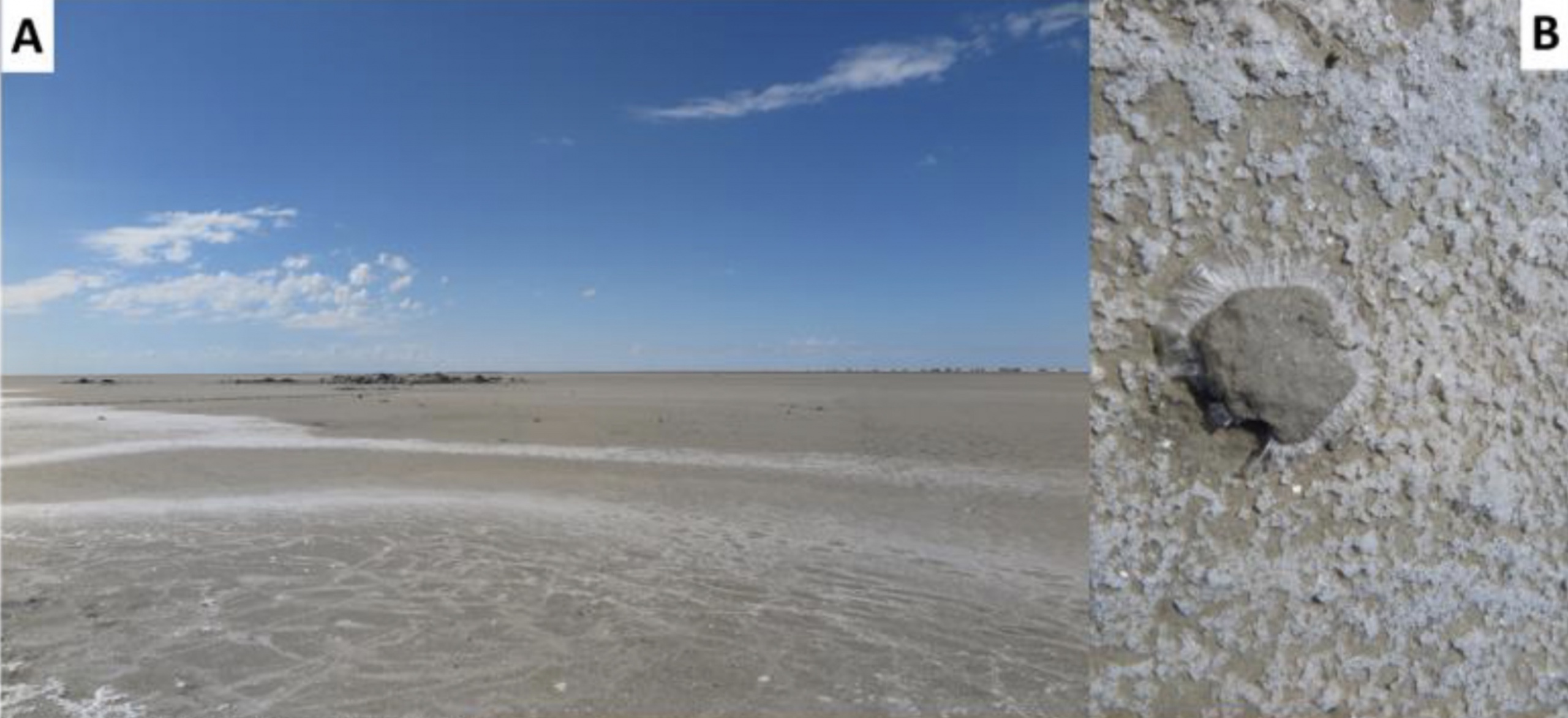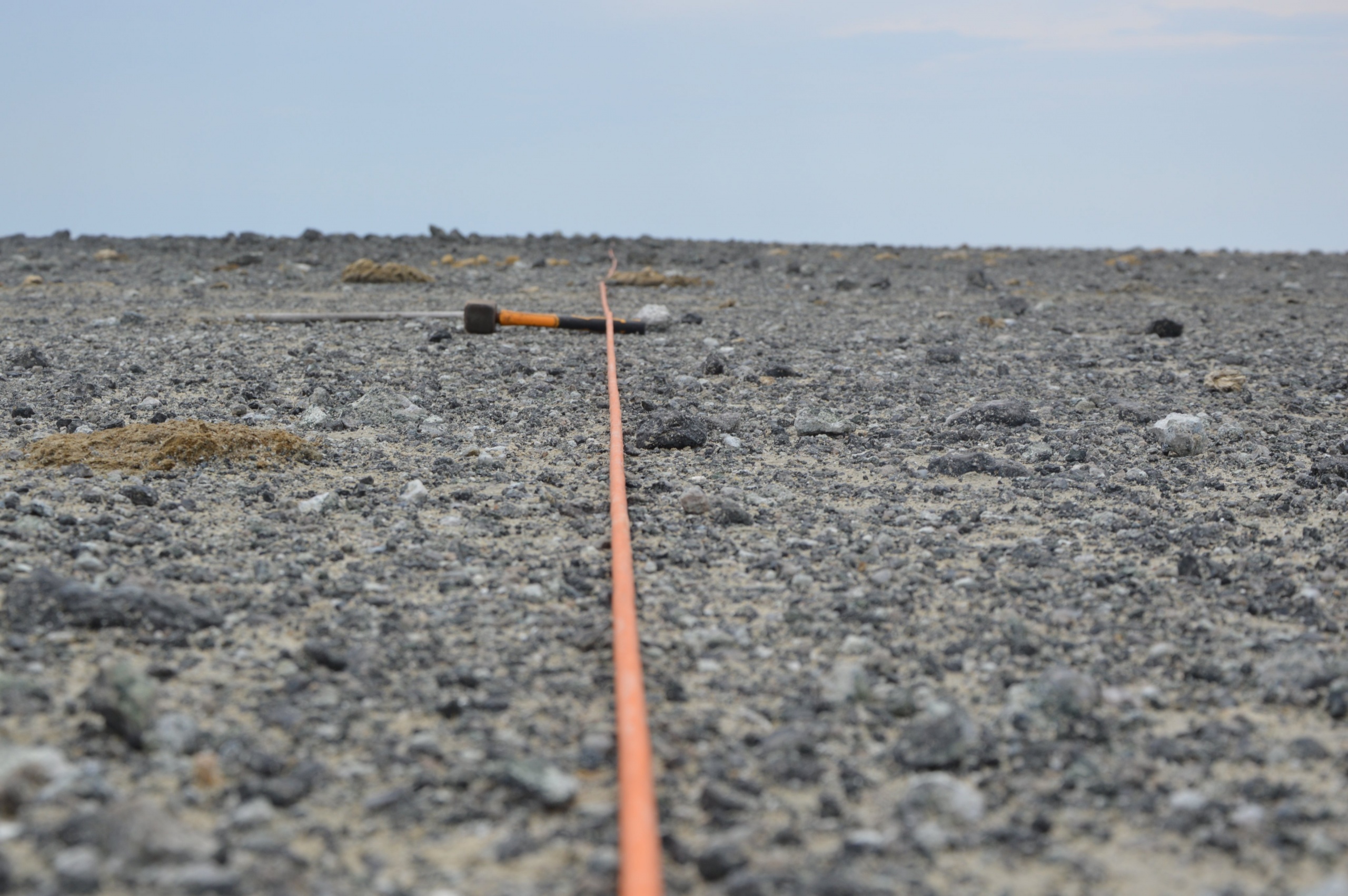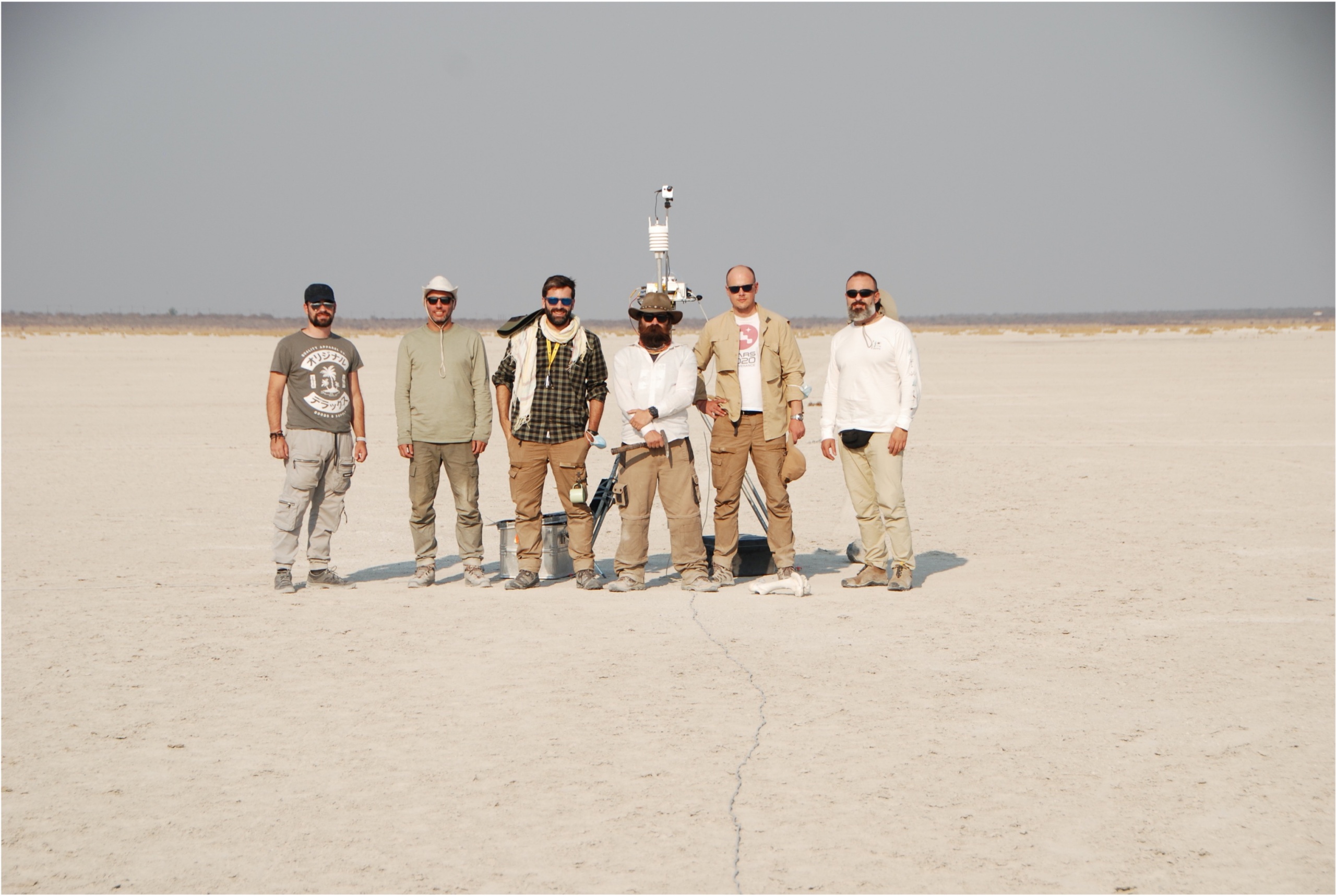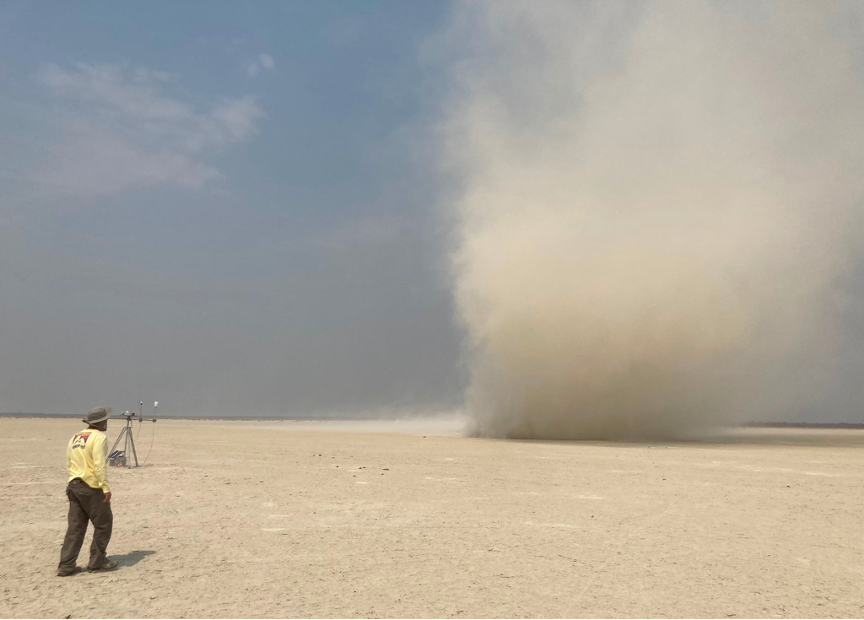TA1 Facility 5 – Makgadikgadi Salt Pans, Botswana
Average visit: 1 week
The Makgadikgadi pans of Botswana represent the largest inland evaporitic basin in the world. The pans provide different environments that vary from the playa lake with the ephemeral spring to the fossil dunes field.
The Makgadikgadi is fed by surface runoff and by groundwater upwelling that give rise to flood channels, ephemeral springs, layered morphologies and evaporite deposits. These peculiar layered morphologies are easily identified from remote sensing and can be compared with those observed in the equatorial region of Mars, for instance.
The flat surface of the pan is wiped by hundreds of dust-devils that, at the end of the rain season, can be several tens of meters high. This wind-wiped surface is ideal for testing instruments and techniques in preparation for future missions.
The surface of the pan is dry for 8 months, from April to November, and is characterised by precipitation of layers of authigenic clays and evaporites such as gypsum and halite. Within this crust the microbial communities of extremophiles including bacteria, algae and fungi are thriving providing good ground for astrobiological research of extreme environments.
Understanding functional metagenomics and metabolism of the saltpans gives valuable information on the molecular adaptation and resistance of these extremophiles to extreme environmental conditions.
Contact:
Fulvio Franchi, Botswana International University of Science and Technology (BIUST), Private Bag 16, Palapye, Botswana. franchif@biust.ac.bw






Report summaries of TA visits to facility
Back to the TA1 Planetary Field Analogues Page












